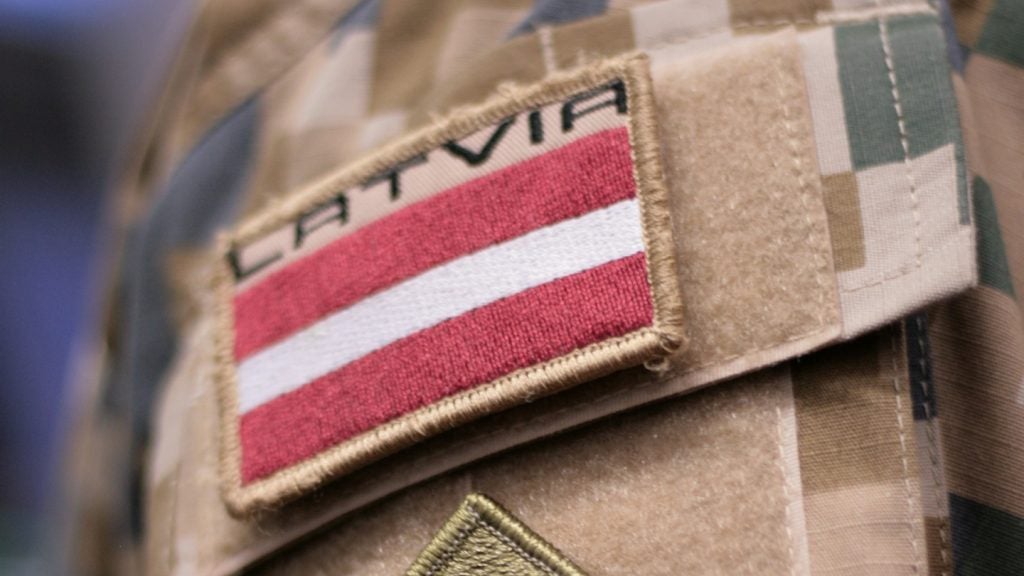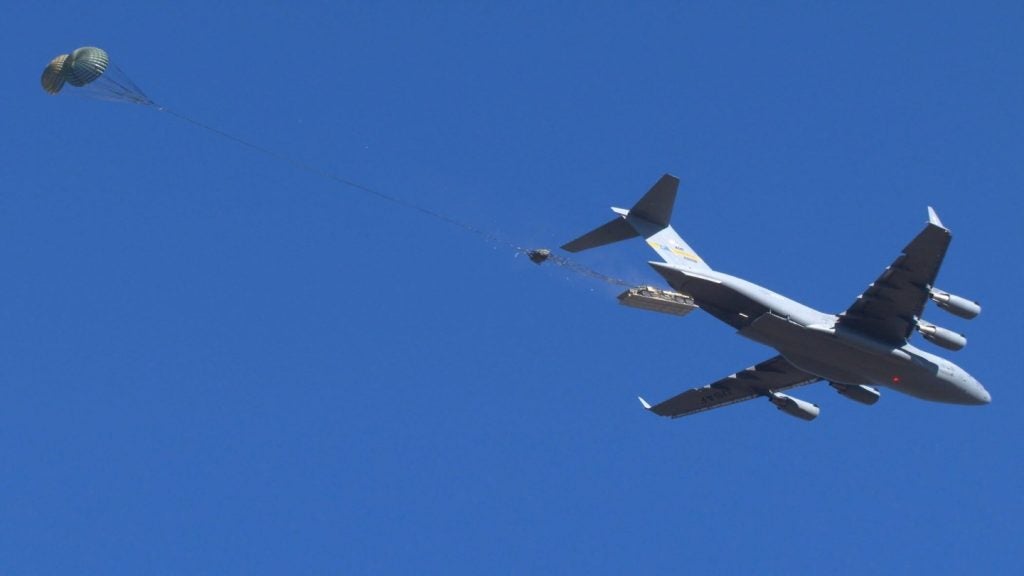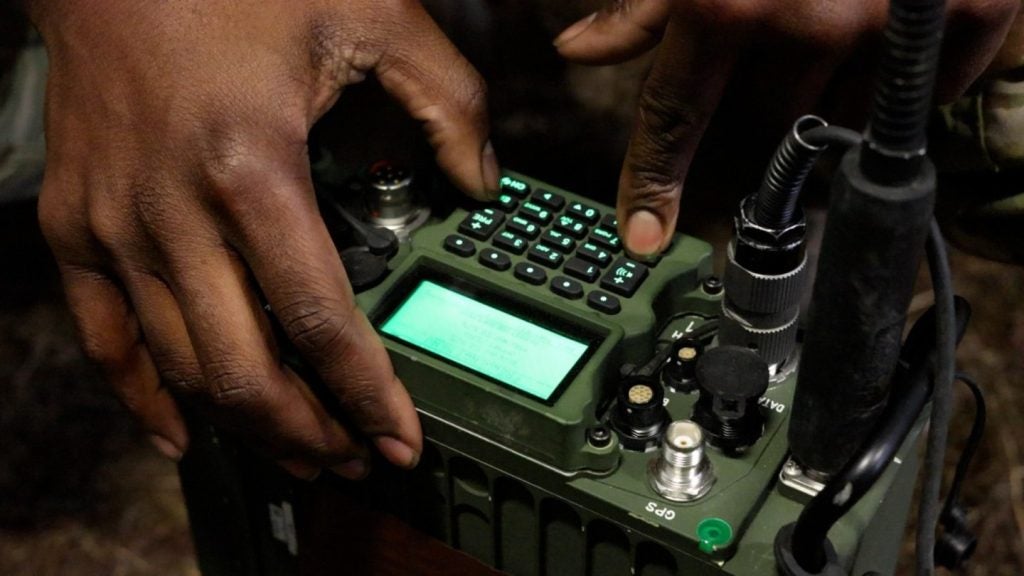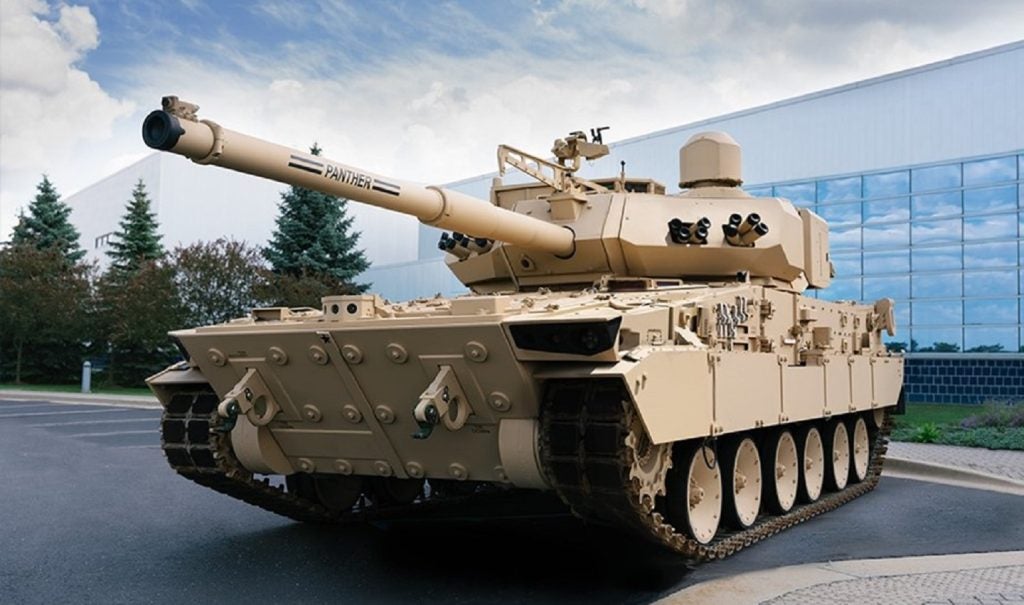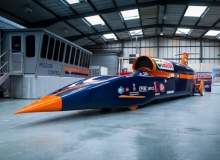

For the past two years, British Army soldiers have been working alongside the world’s best engineers as part of the Bloodhound Project. The partnership was first announced on 1 October 2012 when British defence minister Philip Dunne and Bloodhound director Richard Noble signed an agreement that would see five Royal Electrical and Mechanical Engineers (REME) seconded to the project.
The latest milestone has seen the car’s EJ200 jet engine – normally found on a Eurofighter Typhoon – being test fitted on to the chassis.
Leading the British Army team is Major Oli Morgan, an Aircraft Engineering Officer and Afghanistan veteran. His contribution to the Bloodhound project was recently recognised by the Institution of Mechanical Engineers as their 2014 Modern Day Visionary.
We talk to Major Morgan about his role, what the REME can bring to high-profile projects like Bloodhound and how his team is highlighting the engineering profession to younger generations.
See Also:
Grant Turnbull: How did you become involved in the Bloodhound project?
Maj. Oli Morgan: I started through the Institution of Mechanical Engineers and volunteering as a Bloodhound Educational Ambassador in 2011. I’d just finished a PGCE – post-graduate certificate of education – which I’d been doing in my own time combined with achieving Chartered Engineer status.
How well do you really know your competitors?
Access the most comprehensive Company Profiles on the market, powered by GlobalData. Save hours of research. Gain competitive edge.

Thank you!
Your download email will arrive shortly
Not ready to buy yet? Download a free sample
We are confident about the unique quality of our Company Profiles. However, we want you to make the most beneficial decision for your business, so we offer a free sample that you can download by submitting the below form
By GlobalDataThat really got me interested in what Bloodhound could do to inspire kids into engineering and the more I found out about it, the more I was fascinated by it. At the time the Bloodhound team were doing a review of the project and Richard Noble approached the Army to enquire whether they could hire some very skilled technicians and mechanics as well as a range of deployable workshop facilities for the runs in South Africa in 2015 and 2016.
I was made responsible for staffing the case to the highest level of the Ministry of Defence, setting out detailed benefits to both REME soldiers and the Army as a whole in order to allow us to go ahead. And that, thankfully, was approved and we went to contract in 2012.
GT: You recently won the Modern Day Visionary Award – what was it like to be recognised for your work?
OM: It came as a real surprise. I am immensely humbled by the recognition, it’s certainly not something I was after. More importantly, it’s a fantastic opportunity to champion the work of Bloodhound education outreach and also the amazing work REME technicians are doing. Every day – I can’t wait to get to work.
GT: How big is the Bloodhound SSC team?
OM: It’s a small team, relative to the size of the task, of about 75 people; 25 of which are in the education side and run outreach events with schools, the remainder are on the engineering side and programme office. It’s a tight knit company and everyone is multi-skilled. The army team get to work alongside the very best of British engineers.
From the education side, the British Army contributes about 20% of the Bloodhound educational ambassadors. For the REME, I’ve trained over 150 personnel as ambassadors and we support Bloodhound’s efforts to give every child in the country a lesson on the project by 2018. So far it’s been incredibly successful and Bloodhound has delivered lessons to around 40,000 children this year.
GT: What was your role before you signed on to the Bloodhound project?
OM: My last operational job was leading a detachment of Aircraft Technicians in Afghanistan. I was responsible for leading the maintenance and repair of all Apaches and Lynx helicopters in theatre, commanding a detachment of around 80 technicians. I was ultimately responsible for the quality of the work that was done and ultimately the safety of the pilots.
GT: What are your main responsibilities on the Bloodhound project?
OM: As well as being the Army Team Leader, I also support the Chief Engineer in terms of engineering assurance. So I’m able to use my skills as an Aircraft Engineering Officer to help the team frame engineering and operational risk in addition to support planning the technical camp for the deployment to South Africa for record runs.

GT: Who are the soldiers and what are their responsibilities?
OM: Soldiers are attached to the project on six to nine-month placements which allows Bloodhound to utilise and benefit from the right person at the right time. We have two staff sergeants, currently one in control systems and electronic prototyping, and another who is a machinist and is making parts for the car and using his manufacturing expertise gained from the Army.
We’ve got two outstanding lance corporal female engineers, one of whom is working on the automotive side and the other employed in a vehicle electronics role. We also have a Vehicle Mechanic corporal who is helping build the suspension for the car.
GT: They have a lot of responsibilities then?
OM: They do, it’s been a really good partnership where our younger, less experienced soldiers have been able to benefit from getting involved in cutting edge engineering and technical development. They are supervised at all times but they are able to contribute their knowledge and skills to the development of the car.
GT: Why is it important for the REME to get involved in projects like Bloodhound?
OM: There are around 10,000 people in the REME, both regular and reserve, and as a corps we are rightly interested in where our future engineers come from. There is wide recognition of the shortage of engineers in the UK and we want to be part of an initiative to try to tackle the problem.
For the soldiers who are lucky enough to secure a place on the project, they benefit from what is best described as an ‘engineering masterclass’ – working for their Bloodhound counterpart, learning skills honed over careers in motorsports and aero industry. Each of the soldiers on placements have gone back to their units and have been able to share the technology, the processes and the work practices that they’ve learnt. It’s a once in a generation opportunity that benefits both sides..
More widely, it’s a great way to champion the work of engineers and highlight the potential of REME soldiers, which is really good. It provides something that’s tangible for the British public to be able to see what our Army technicians are doing.
GT: What skill sets can the REME bring that other groups cannot?
OM: It’s not fair to compare us to other industries. What I do know is that my soldiers have to deliver on operations and failure is never an option. As a corps, REME always strives to get equipment fixed no matter what it takes, or to get an aircraft safely back into the air – so for us it’s about problem solving and initiative. We’ve got a great opportunity to really exploit the talent of REME personnel and Bloodhound allows us to do that.
GT: What’s next for REME’s involvement?
OM: The long term plan for Bloodhound is that by around this time next year we’re going to start looking towards runway tests in Newquay and then before the end of 2015 we will be looking at high speed runs in South Africa.
We’re going to be aiming for 800mph in the first year and then in 2016 we’re going to be looking for 1000mph and the REME team will be part of that story. We are going to be heavily involved in the build, which you will see develop this year as the car comes together.
The plan is also for the REME soldiers to support deployment. That’s precisely what we do and the reason why Richard Noble contacted us; he needed very skilled technicians and mechanics who could work with high technology in the most austere of environments. We’ll be able to continue our commitment and support the project out in the South African desert.
GT: Have you used reservists during your time working on Bloodhound?
OM: Absolutely, we used reservists as part of our ambassador team and aim to use specialist skills on the build team. For example, Craftman Sarah Dorey [a private soldier in the REME], she’s a REME vehicle mechanic which she combines with her job as a test engineer and she’s been an absolute star in inspiring kids into engineering. As a reservist she is absolutely fantastic and I can’t stress enough the benefits of getting people involved in the REME reserves, particularly for the employers who get to take advantage of the leadership and technical training offered to soldiers as part of their Reserve careers.
Follow Grant Turnbull on Google+


.gif)

